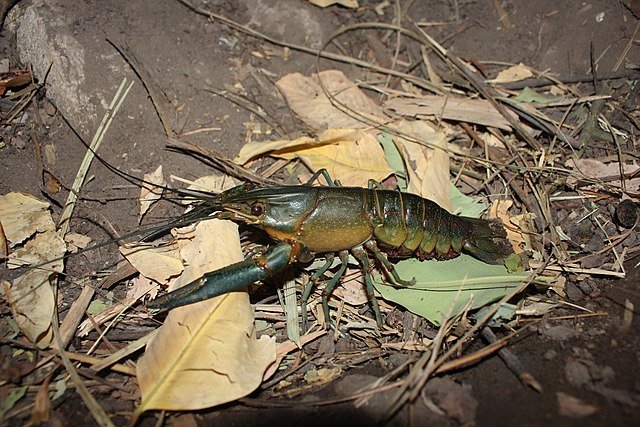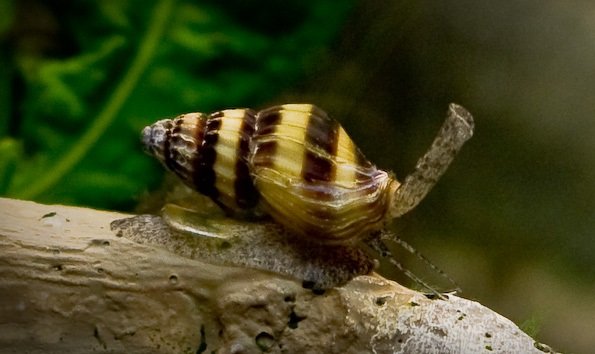
Snail infestations pose a significant threat to both aquaculture and human health worldwide. In aquaculture, snails serve as secondary hosts for disease-causing parasites that can decimate cultivated populations. Addressing this challenge, the use of biocontrol agents, particularly crayfish, emerges as a promising solution. However, the invasive nature of most crayfish species limits their widespread application.
In this context, scientists from Ben-Gurion University of the Negev and Stanford University evaluated the potential of the Australian crayfish, Cherax quadricarinatus, as a biocontrol agent. They explored an innovative biotechnological approach to harness its benefits while mitigating the risks of invasion, specifically developing single-sex female populations of C. quadricarinatus.
The Crayfish Biocontrol Dilemma
While crayfish are known for their voracious appetite for snails, their invasive tendencies have restricted their use in biocontrol efforts. The Australian crayfish stands out as a key player in aquaculture, but concerns about its escapees establishing invasive populations worldwide have hindered its widespread adoption.
C. quadricarinatus is a freshwater species native to Australia and Papua New Guinea but has become invasive in many parts of the world. Attempts to eradicate invasive populations of this crustacean have proven unsuccessful.
Nevertheless, the use of female crayfish can provide a means for snail biocontrol, preventing diseases, and enabling the aquaculture industry to produce without the risk of parasites affecting cultivated fish.
Single-Sex Populations for Biocontrol
To address the invasive threat, researchers propose the production of single-sex populations of C. quadricarinatus. This not only serves as a sustainable solution for snail control but also enhances yields and management in river crab aquaculture. The focus is on developing exclusively female populations, leveraging the natural intersexuality of C. quadricarinatus.
Over the past decade, numerous studies have highlighted the advantages of producing single-sex (female or male) populations in aquaculture for various species.
Efficiency in Snail Eradication
In predation experiments, both male and female crayfish showed high efficiency in eliminating Thiara scabra snails. Females, in particular, demonstrated superior efficiency, laying the groundwork for the potential advantages of exclusively female river crab populations in aquaculture.
Stay Always Informed
Join our communities to instantly receive the most important news, reports, and analysis from the aquaculture industry.
“Both males and females were very efficient in predation experiments, eliminating 89% and 98% of Thiara scabra snails, respectively,” reported the scientists.
Creating Exclusively Female Populations
The second part of the study delves into the development of an economically viable biotechnology that requires minimal labor for producing exclusively female populations of C. quadricarinatus. Leveraging the natural intersexuality in crayfish populations, researchers isolated females carrying only the W sexual chromosome. Breeding these females with WZ intersex individuals resulted in 100% female populations, including 50% WW females, paving the way for the establishment of exclusively female-producing breeders.
A Quantitative Scheme for Sustainable Implementation
The article presents a quantitative scheme describing the non-genomic intervention approach to implementing this biotechnological advancement. This approach demonstrates its viability for both sustainable aquaculture and combating harmful snails that threaten aquaculture, agriculture, and human health.
Conclusion
The dual benefits of controlling snails in aquaculture and improving river crab aquaculture management are within reach through the innovative use of the Australian crayfish. “We present a quantitative scheme that demonstrates how our approach, which does not involve any genomic intervention, can be implemented for both sustainable aquaculture and combating harmful snails that damage aquaculture, agriculture, and human health,” conclude the researchers.
By developing exclusively female populations through a non-genomic intervention approach, researchers provide a pathway for sustainable biocontrol without the risk of invasive escapes. The researchers hold a patent for specific genomic markers of sex in the Australian river crab (International Application Number: PCT/IL2018/051046, International Publication Number: WO/2019/058371).
Contact
Amir Sagi
Department of Life Sciences, Ben-Gurion University of the Negev
P.O. Box 653, Beer-Sheva 84105, Israel.
Email: sagia@bgu.ac.il
Reference
Shai A. Shaked, Tom Levy, Sharon Moscovitz, Hanin Wattad, Rivka Manor, Ofer Ovadia, Amir Sagi, Eliahu D. Aflalo. 2024. All-female crayfish populations for biocontrol and sustainable aquaculture, Aquaculture, Volume 580, Part 2, 2024, 740377, ISSN 0044-8486, https://doi.org/10.1016/j.aquaculture.2023.740377.
Editor at the digital magazine AquaHoy. He holds a degree in Aquaculture Biology from the National University of Santa (UNS) and a Master’s degree in Science and Innovation Management from the Polytechnic University of Valencia, with postgraduate diplomas in Business Innovation and Innovation Management. He possesses extensive experience in the aquaculture and fisheries sector, having led the Fisheries Innovation Unit of the National Program for Innovation in Fisheries and Aquaculture (PNIPA). He has served as a senior consultant in technology watch, an innovation project formulator and advisor, and a lecturer at UNS. He is a member of the Peruvian College of Biologists and was recognized by the World Aquaculture Society (WAS) in 2016 for his contribution to aquaculture.




